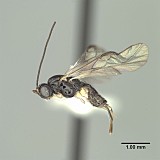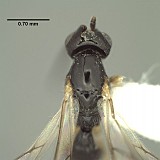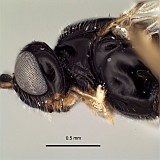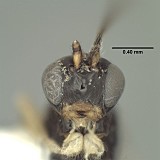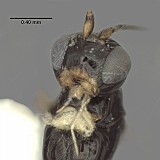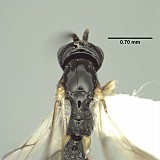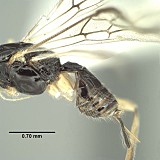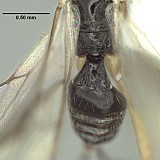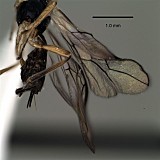Opius stecki Wharton, 2013
Holotype: Female, deposited in FSCA (Gainesville, Florida).
Three species are included in the Opius pipitae species group: O. pipitae, O. stecki, and O. townesi. These species will key to either Pendopius or Opiothorax in the subgeneric classification of Fischer (1972, 1977) and to Adontopius Fischer in Fischer (1999). In Li et al. (2013), they key to Phaedrotoma. In members of the pipitae species group, the vertical carina on the pronotum laterally is very well developed and the pleural sulcus is distinct both anterior and posterior to the propodeal spiracle.
Opiua stecki is much darker in color than O. pipitae. The head is completely dark above while the mesoscutum is extensively pale in O. pipitae and is completely dark in O. stecki. The ovipositor is also slightly shorter in O. stecki and the mandibles not quite as deflected ventrally.
There are no specimens currently determined for this OTU, or those specimens determined for this OTU are not yet mappable.
GUATEMALA: Dept. Zacapa second line: Sierra de las Minas, San Lorenzo rd; third line: 1600–1700m; vic 15.07329, -89.68463; fourth line: 21–24 V 2010; Sutton, Steck, Skelley, fifth line: Monzon S.; oak forest
Second label:
reared from galls Polionota n. sp.
(Diptera: Tephritidae) ex Coreopsis
mutica DC. (Compositae)
emerged late VI–VII 2010
This material is based upon work supported by the National Science Foundation under Grant Numbers DEB 0949027 and DEB 0328922 with REU supplement 1313933.
Any opinions, findings, and conclusions or recommendations expressed in this material are those of the author(s) and do not necessarily reflect the views of the National Science Foundation.

